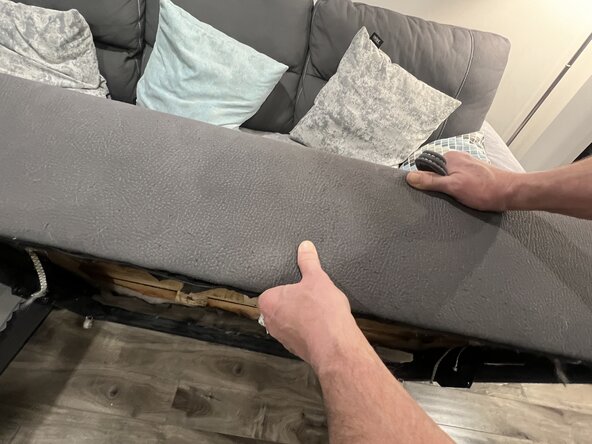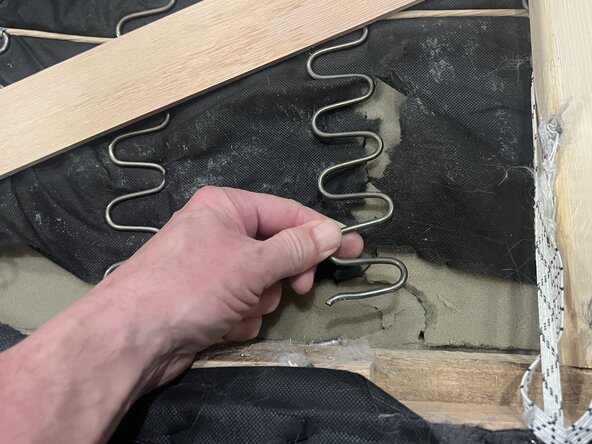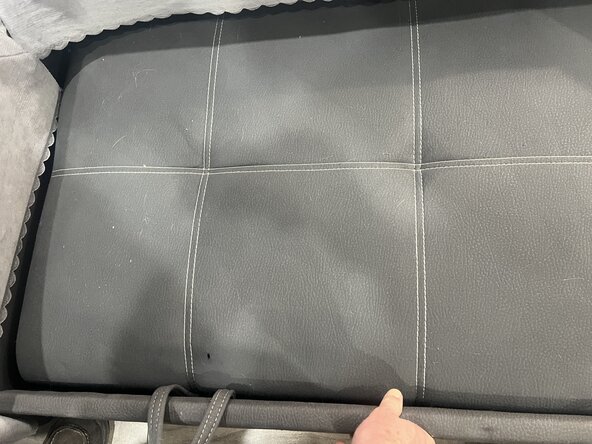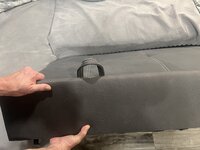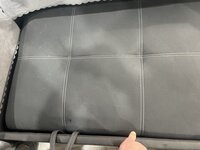crwdns2915892:0crwdne2915892:0
If your couch or sofa has an unwanted dent that wasn't there before, use this guide to fix a dislodged couch spring.
This is a universal guide for fixing dislodged couch springs. Most sofas and couches are spring-held, and these springs may get dislodged from their socket. Dislodged springs cause uncomfortable dents in the seats of your couch, and are usually easy to fix, saving you the money of buying a new couch.
Although it is optional, this guide is most efficient when done with a partner. Couch springs tend to have a lot of tension on them and are much easier to re-insert with an extra pair of hands.
Before beginning, it is best to remove any pillows, blankets, or anything else on your couch that might get in the way.
crwdns2942213:0crwdne2942213:0
-
-
Locate the area of the couch that appears to be dented or warped.
-
-
-
Open the internal compartment of the couch in the specific area that was dented.
-
To access the internal compartment of your couch, remove any seat cushions, then locate and unzip, or detach the fabric lining underneath. If the frame has a panel, unscrew or unclip it as needed. Most compartments are underneath, so check if it lifts open.
-
-
-
-
With the help of a partner (optional), hold the couch spring down, and reinsert the tip into the socket.
-
This may be done with the use of pliers if there is too much tension on the spring for you to hold.
-
-
-
After inserting the tip of the spring into the socket, try pushing the spring fully into place. If needed, ask a partner to assist with the process.
-
After the tip of the spring is inserted, keep applying tension so that it stays in place.
-
-
-
Once the head of the spring has been fully inserted into the socket, ensure that the rest of the spring is properly positioned and that no other parts are flaring out.
-
If necessary, repeat the previous steps on any other dislodged springs until they are all in place.
-
-
-
Close the internal compartment of the couch, and your dent is fixed!
-



